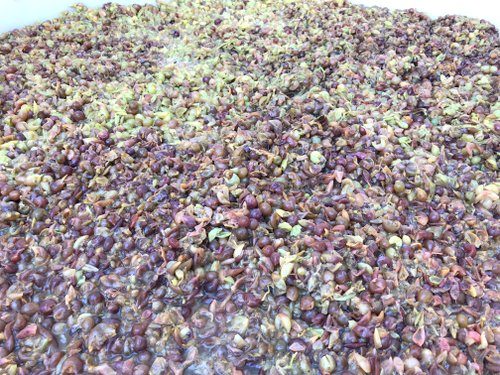
With four different producers working in the same cellar space, there’s always plenty going on at Gabrielskloof, especially because I’m here right in the peak period of harvest. Here are a couple of things I got up to on the same morning. Above we have Marelise Niemann’s Grenache Gris (this will be released under her Momento label). There’s about a ton and a half (my guess) that has been destemmed into a plastic bin and left for four days. Because the grapes are cold (they spent the night in a cold store before processing), fermentation hasn’t begun, and the idea here is to allow some skin contact, but not to ferment on the skins (making an orange wine).
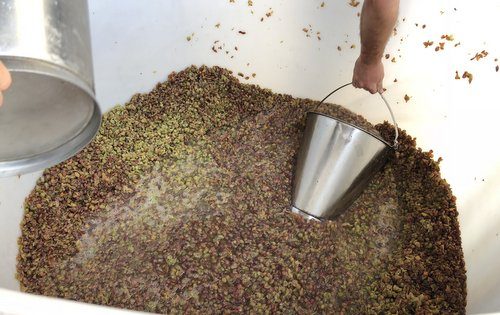
So it’s time to press. But you can’t pick up a plastic bin like this and tip it into the press, so the grapes have to be loaded by bucket. This is a lengthy process and it’s quite hard work: one of these buckets weighs quite a bit, and it takes many bucket loads.
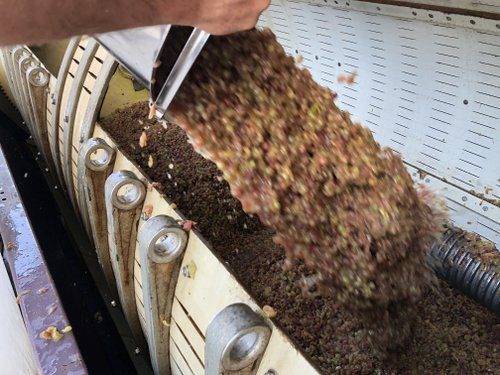
A lot of the juice just runs out of the press, into the drip tray, and is pumped into tank. Then the press begins, and the rest of the juice is squeezed out. The wine will be settled in the tank overnight and then racked to barrels for fermentation. This is about four barrels’ worth.
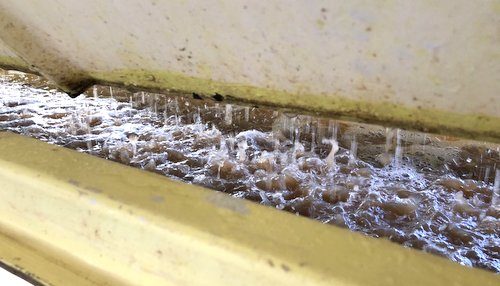
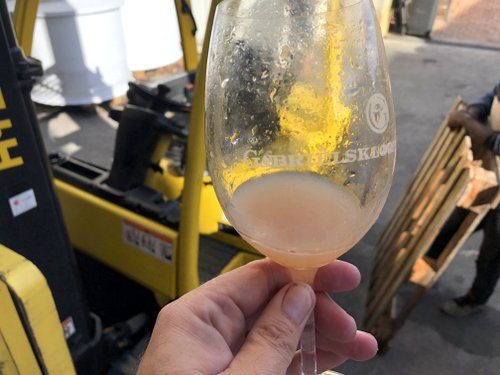
This is what it looks like: there’s a bit of colour from the skins, but not too much. There’s also a bit of colour from the oxidative nature of the pressing. This will disappear during fermentation, but the four days of skin contact helps bring out some of the flavour from the skins, and just a little tannic grip, but not too much.
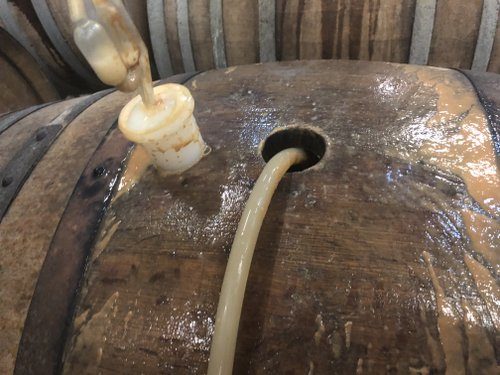
Next job was some barrel maintenance. This is a 500 litre barrel where fermentation had begun. It was filled a bit too much and so it erupted overnight. My job was to siphon off some juice to stop this happening again (it had happened to several barrels). The juice went into a plastic bin and will be used to top the barrel up again when fermentation begins to slow. And then I had to clean the barrels. A lot of winemaking is cleaning stuff.
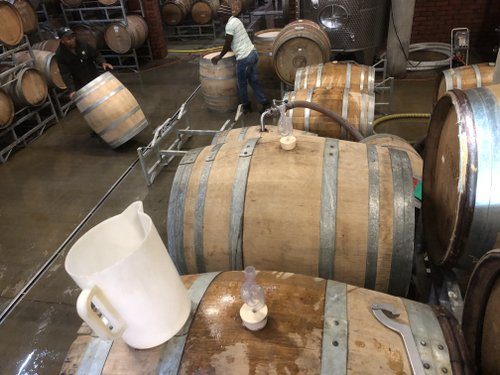
Then I had to top some Chardonnay barrels up where fermentation had slowed. I got a big bucket and filled it with juice that was being used elsewhere to fill barrels. Then, using a small torch and a jug I filled the barrels to the right level.
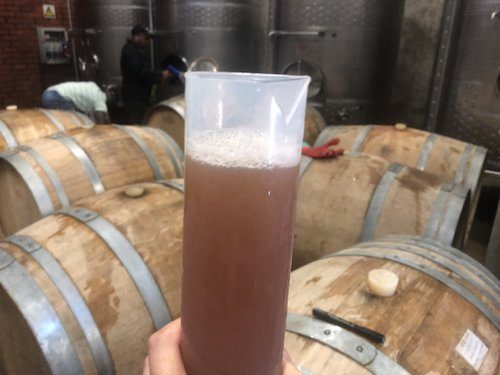
Here you can see the juice, and how brown it gets in contact with air. This is because of oxidation of phenolic compounds in the juice. For Chardonnay and some other wines it’s good to let the juice see air before fermentation, because the phenolics oxidise and fall out, resulting in a more stable wine later in its life (this is because phenolic compounds in white wines make them susceptible to oxidation). For some other varieties you protect the juice before fermentation. Juice is more susceptible to browning/oxidation than wine because it is enzymic oxidation via polyphenol oxidases. In wine, oxidation is what’s known as chemical, as opposed to enzymic, and it’s a slower process.
Harvest at Gabrielskloof:
- Managing red wine ferments
- Vineyard sampling
- Collecting grapes
- Pressing Chenin Blanc and sorting Pinot Noir
- Pressing Grenache Gris and barrel work
- The final instalment
1 Comment on Harvest at Gabrielskloof, pressing Grenache Gris and barrel work
A lot of winemaking is cleaning stuff. Love that note -I could imagine upon seeing it first hand it could seem that its about all one does.